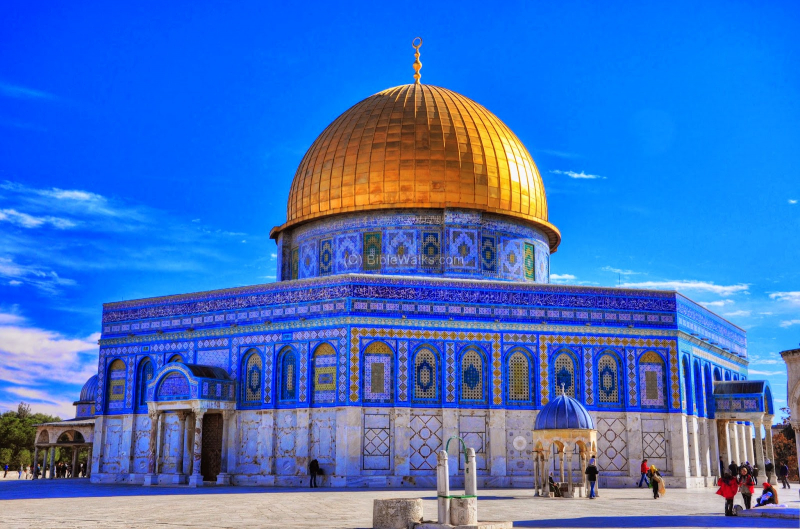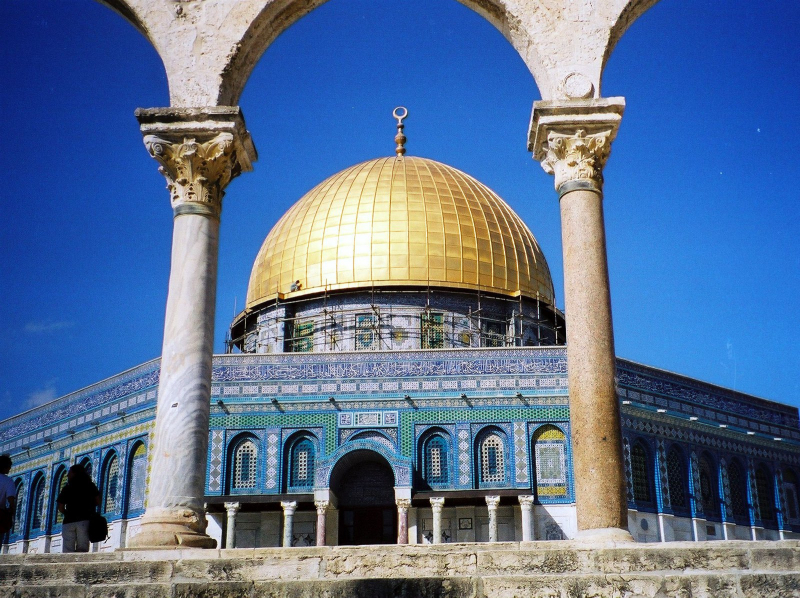The Dome of the Rock
The Dome of the Rock is an Islamic shrine that can be seen on the Temple Mount in Jerusalem's Old City. Muslims often refer to this location as the Al-Aqsa Compound or al-Haram al-Sharif. After collapsing in 1015, the old dome was restored in 1022–1023. The Dome of the Rock is the earliest surviving example of Islamic design in existence. Although its outward look was drastically altered during the Ottoman time and again in the contemporary period, most notably with the installation of the gold-plated roof, its architecture and mosaics were modeled after surrounding Byzantine churches and palaces.
In the Abrahamic religions, the foundation stone that the temple was constructed on holds enormous significance as the site where God created the world and the first person, Adam. Jews look toward it during prayer because it is also said to be the location of Abraham's failed effort to sacrifice his son and the area where God's presence is most clearly felt than anywhere else. The Holy of Holies stood immediately atop the Foundation Stone, according to Jewish tradition and the accepted scientific hypothesis. Muslims view this location as having tremendous significance because of legends linking it to the world's creation and the notion that Muhammad's Night Journey started from the rock at the center of the building.
Along with two other neighboring Old City buildings, the Western Wall and the "Resurrection Rotunda" in the Church of the Holy Sepulchre, it has been referred to as "Jerusalem's most identifiable landmark". According to historian Oleg Grabar, the Dome of the Rock continues to be a "unique monument of Islamic civilization in practically all respects", including as a "piece of art and as a cultural and spiritual document".
Location: Temple Mount, Old City of Jerusalem









